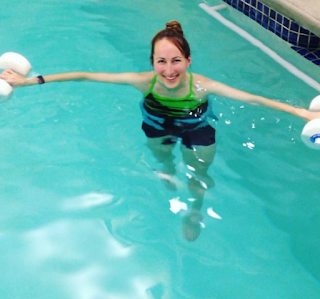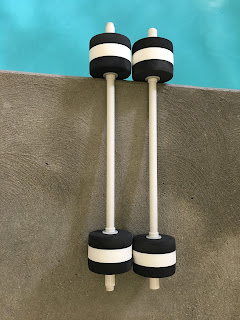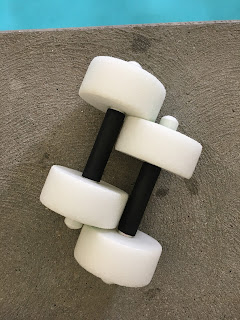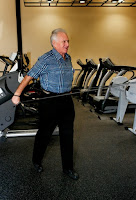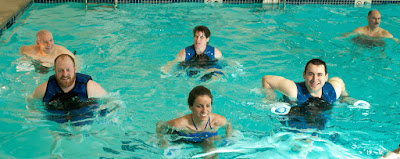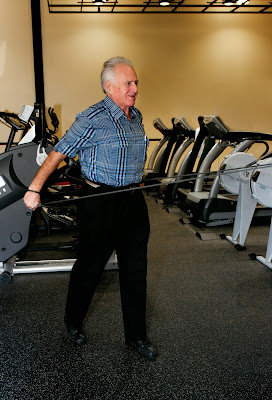A common
question when working with clients in the pool is “Which is harder the long
bars or the short bars?”
question when working with clients in the pool is “Which is harder the long
bars or the short bars?”
The answer to the question depends on the exercises that you will be doing and the goals of your exercise
program. Understanding the equipment and
the differences will help you choose the appropriate tools to make your workout
the most effective.
program. Understanding the equipment and
the differences will help you choose the appropriate tools to make your workout
the most effective.
Using bars
with more buoyancy will create more resistance when trying to move them through
the water. This will make these types of
exercises more difficult. However,
exercise where you are in the hanging position will be easier with more buoyant
bars because they will provide more support and stability.
with more buoyancy will create more resistance when trying to move them through
the water. This will make these types of
exercises more difficult. However,
exercise where you are in the hanging position will be easier with more buoyant
bars because they will provide more support and stability.
Using bars
with less buoyancy creates less resistance when trying to move them through the
water. Less buoyant bars will make these
types of exercises easier. The less
buoyant bars will make exercises more difficult in the hanging position. The reduced support and stability will
require your body to work harder to maintain alignment therefore challenging
your core muscles more.
with less buoyancy creates less resistance when trying to move them through the
water. Less buoyant bars will make these
types of exercises easier. The less
buoyant bars will make exercises more difficult in the hanging position. The reduced support and stability will
require your body to work harder to maintain alignment therefore challenging
your core muscles more.
Example of
progression from easy to difficult using equipment for an exercise that
requires you to move the bars in and out of the water vs. a hanging exercise.
progression from easy to difficult using equipment for an exercise that
requires you to move the bars in and out of the water vs. a hanging exercise.
Pump and Walk
Mini Bar → Short Bars Level 1 →
Short Bars Level 2 → Long Bars
Short Bars Level 2 → Long Bars
Click for video: www.instagram.com/p/BIsxNVXguZQ/
Splits and Spreads
Long Bars→ Short Bars Level 2 →
Short Bars Level 1 → Mini Bars
Short Bars Level 1 → Mini Bars
Click for video: www.instagram.com/p/BAaPwksHmRW/
Equipment
Long Bars
Long bars
provide the most buoyancy, therefore they will give you the most support and
resistance.
provide the most buoyancy, therefore they will give you the most support and
resistance.
Short Bars
Level 2
Level 2
These bars
have slightly less buoyancy than the long bars.
They will be a little easier for exercises that require movement through
the water and slightly harder for hanging exercises than the long bars.
have slightly less buoyancy than the long bars.
They will be a little easier for exercises that require movement through
the water and slightly harder for hanging exercises than the long bars.
Short Bars
Level 1
Level 1
The level 1
short bars have less buoyancy than level 2 short bars and long bars. They will be easier for exercises that
require movement through the water and more difficult for hanging exercises.
short bars have less buoyancy than level 2 short bars and long bars. They will be easier for exercises that
require movement through the water and more difficult for hanging exercises.
Mini Bars
Mini bars
provide the least amount buoyancy. These
bars will be the easiest for exercises that require movement through the water
and the most difficult for hanging exercises.
provide the least amount buoyancy. These
bars will be the easiest for exercises that require movement through the water
and the most difficult for hanging exercises.
Blog post by Eric Chandler.


